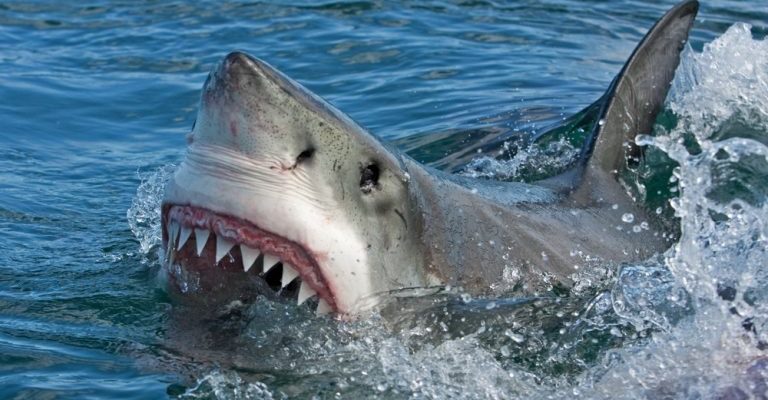
You might be wondering how a shift in temperature or ocean acidity can affect a shark that seems so powerful and untouchable. It’s all connected to the delicate balance of marine life. Just like how a major storm can change a calm day at the beach, climate change is tossing around the very foundations of the ocean ecosystem, and great white sharks are right in the middle of it.
Rising Ocean Temperatures
One of the most straightforward impacts of climate change is the increase in ocean temperatures. Water that’s warmer than usual can lead to a range of problems for great white sharks. These sharks prefer cooler waters, mainly because their bodies operate more efficiently in these temperatures. When the water gets too warm, their hunting abilities can decline.
Think of it this way: if you’re trying to run a marathon in a heatwave, you’re not going to perform at your best. Similarly, the great white sharks might struggle to hunt effectively. This can lead to less food intake, which is crucial for their survival.
Moreover, rising temperatures can also encourage the growth of harmful algae blooms. These blooms produce toxins that not only harm fish and other marine life but can also poison the sharks that consume them. In a way, the food chain becomes a ticking time bomb as these changes escalate.
Changing Migration Patterns
With a shift in water temperatures, you can bet that the migration patterns of marine species will change, too. Great white sharks are known for their long migrations, often seeking cooler waters during warmer months. However, as climate change warms their usual haunts, they may stray from traditional migration paths, searching for suitable habitats.
This shift can have a ripple effect on their prey. For instance, seals—one of their main food sources—might also change their own migration routes. If great whites can’t follow their food, they’re left in a dire situation. Imagine trying to find your favorite restaurant, only to discover it’s closed and you have no idea where to go next. That’s what it’s like for great whites when climate change alters their routes.
Impact on Prey Availability
Speaking of prey, let’s dive deeper into how climate change affects the creatures great white sharks rely on for food. As the oceans warm and acidification increases, populations of fish and marine mammals can fluctuate dramatically. Some species may thrive, while others could be pushed to the brink of extinction.
When food sources become scarce, it forces the great white sharks to expend more energy to find food. This isn’t just an inconvenience; it can lead to significant declines in their population. You wouldn’t want to go out for dinner if every restaurant was closed, right? The same logic applies here. Less food means weaker sharks and a potential decline in their overall numbers.
Shark Reproduction and Development
Climate change also plays a role in the reproductive health of great white sharks. Warmer waters can affect the timing of shark mating seasons and the development of their embryos. Studies suggest that elevated temperatures might impact the growth rates of shark pups, making them more vulnerable when they’re born.
Imagine if your childhood home suddenly became too hot and stuffy to live in; it would affect everything from sleeping to doing homework. For these sharks, a similar scenario is unfolding as their nurseries—safe places where pups develop—may no longer offer the conditions needed for healthy growth.
Ocean Acidification and Its Effects
Another crucial aspect to consider is ocean acidification, a byproduct of rising CO2 levels in the atmosphere. As CO2 dissolves in seawater, it lowers the water’s pH, creating a more acidic environment. While this might not directly harm great white sharks, it poses a significant threat to their prey, particularly shellfish and other marine organisms that rely on calcium carbonate structures.
If these species struggle to survive, it could indirectly affect the food web and, ultimately, the sharks themselves. It’s a bit like building a house on shaky ground; if the foundation crumbles, everything built upon it is at risk.
Conservation Efforts and Future Outlook
So, what does all of this mean for the future of great white sharks? The situation may seem grim, but conservation efforts can play a vital role in protecting these majestic creatures. Organizations worldwide are working hard to monitor shark populations, protect their natural habitats, and raise awareness about the impacts of climate change on marine ecosystems.
Engaging in local conservation efforts, advocating for sustainable fishing practices, and reducing our carbon footprint can all contribute to healthier oceans. Remember, every little action counts! Just like a single drop can create ripples in a pond, our collective efforts can drive change for these magnificent sharks.
In conclusion, climate change is a far-reaching issue that’s impacting great white sharks in various ways—from altering their hunting habits to affecting their reproductive success. While the future may look uncertain, understanding these changes is crucial for the continued survival of these extraordinary animals. By making conscious choices for our planet today, we can ensure that future generations will still witness the power and beauty of the great white shark. So let’s do our part to keep the oceans—and their inhabitants—thriving.

